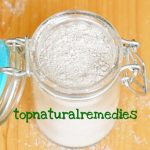What is Perimenopause? All About Perimenopause Symptoms
Perimenopause is defined as the transition period preceding menopause. Perimenopause occurs when a woman’s body makes a natural shift of ovulation and menstrual cycles more or less regular to permanent infertility, or menopause.
What are perimenopause symptoms?
Women can start their perimenopause period at different ages. At 40 years old, or even earlier, at 30 years, the first signs may begin to notice. Menstrual periods may become irregular – bigger, shorter, heavier or lighter, sometimes they are repeated at intervals greater or less than 28 days.
Also, symptoms similar to menopause such as hot flashes, sleep problems and vaginal dryness may appear. During perimenopause, your body will experience small or large changes. Some of the most popular symptoms of perimenopause are:
Irregular menstrual periods. Ovulation becomes irregular and intervals between periods become longer or shorter. Also, you may experience heavy bleeding or lack of menstrual bleeding.
– Early perimenopause is defined by a change in the menstrual cycle length by more than seven days.
– Late perimenopause is characterized by two or more missed menstrual periods and an interval of 60 days or more between menstrual periods.
Hot flashes and sleep disorders. Approximately 65-75% of women experience hot flashes, most frequently during late perimenopause. Intensity, duration and frequency of these symptoms ranges. Sleep problems often cause hot flashes or night sweats, but sometimes sleep becomes erratic even without them.
Mood swings. Some women experience changes in mood, irritability, increased risk of depression during perimenopause. These symptoms may occur as a result of sleep disorders caused by hot flashes. Nevertheless, mood changes can be caused by factors unrelated to the hormonal changes of perimenopause.
Vaginal and bladder problems. When estrogen levels are low, vaginal tissues may lose elasticity and lubrication, making intercourse painful. Also, low levels of estrogen can make you more vulnerable to vaginal or urinary infections. Loss of tissue tone may contribute to urinary incontinence.
Decreased fertility. When ovulation becomes irregular, the ability to conceive a child decreases. However, as long as you still have menstrual periods, there are still chances of getting pregnant.
Loss of bone mass. With declining estrogen levels, you begin to lose more bone mass than your bones can recover, increasing the risk of osteoporosis.
A change in cholesterol. Decreased estrogen levels can lead to adverse changes of cholesterol levels, including an increase of LDL cholesterol – “bad” cholesterol – which contributes to an increased risk of heart disease. Meanwhile, HDL cholesterol – the “good” cholesterol lowers with aging.
Although these signs are not completely solvable, there are treatments available to help relieve these symptoms. Once you’re over 12 consecutive months without a menstrual period, you’re officially in menopause and perimenopause period has passed.




